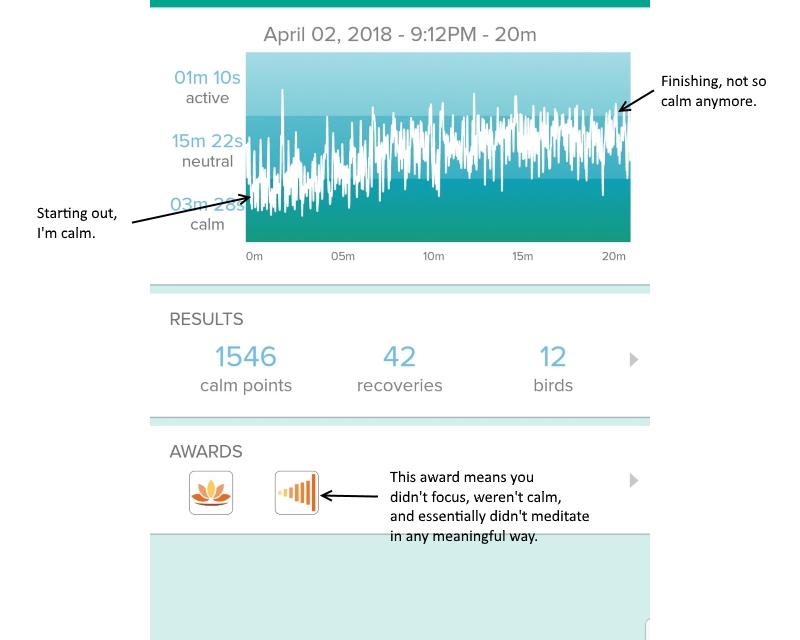Mindfulness Technology
Mindfulness, Gadgetry, Quantified Self
I've been thinking about my earlier post related to mindfulness and gadgetry. And I believe it is possible that gadets and quantified-self measurements really can help us live more mindful lives. There's evidence to the contrary, of course, but that doesn't have to be the path that we follow.
To think clearly about the relationship of mindfulness and gadgets, let's start with a definition of mindfulness. I like this definition from mindful.org:
Mindfulness is the basic human ability to be fully present, aware of where we are and what we’re doing, and not overly reactive or overwhelmed by what’s going on around us.
Here's a link to that quote.
So, we're trying to be fully present in the moment.
We all know that gadgets can distract us. We've had plenty of experience with important work emails arriving at dinner time and social media posts that draw our attention. Look around most any public place you go and you will see people who are mentally elsewhere.
So, how do we use our gadgets to the best effect to help us be present in the moment?
Part 1
Technology can help us if we are using them to be conscious of ourselves.
What are some things that get in the way of this? If our quantified self goal is about the future. Something like "My resting heart rate needs to be X and I need to make a plan to achieve that." Or "I want to be in a calm state of mind for 80% of the time when I meditate, and I'm not getting there now." Well, then you are not present.
You may be making yourself more healthy, and that's good, but you are not present now. You are looking at now and reflecting on how to improve.
If our gadgets and measurements allow us to be more aware of the body. To lead us to make choices in the moment. "I"m going to go for a walk now because I'm aware of my stress." Or "It's time to go to bed because my body needs rest." Then we are more present because we're aware of how we're doing.
Gadgets and quatnitifed self measurements can help you into this awareness.
In reality, most of us probably do some of both. There's a healthy element to looking ahead and making plans. You just don't want it to overwhelm you or for it to become the only thing that you think about, or to continual make it about goals down the road and never appreciating the moment that you're in.
Part 2
If you are using some type of gadget or device to actually measure or evaluate your meditation practice, then you have an additional way that a gadget can help you.
There are risks here, too. If you are too focused on the gadgetry or the goals, it detracts from the meditation. It's happened to me before.
But if you incoporate into your routine and you don't make it ABOUT the gadget. Then it's worth reflecting on the patterns that you see.
A different kind of visualization of what your mind is doing when you're at rest is interesting and can be revealing about how you are really doing.
I mentioned my own particular challenge in this blog post. I have a challenge sometimes where my mind becomes MORE active when I am meditating. I actually start out calm and relaxed and it's during the meditation itself (when I am not distracted by other things) that my mind activates around stressful things that may have happened that day.
Here is another example - this one the app actually granted me the 'Wanderlust Award' for. This badge was awarded because my 'mind began to wander near the end of this session'. No kidding:

Well, someone did a nice job of naming it 'Wanderlust', but that is not as fun as it sounds.
It's not that you don't know that your mind is wandering, it's something that you learn to recognize when you're meditating. It's the pattern:
Start Calm
Mind Wanders
Get Less Calm
Mind Wanders More
The gadget and app aspect has helped me to recognize this, and this is helping me be more aware and think about that situation when it happens.
It's a bit different than the 'I know I am not calm but I'm meditating anyway', because it's a bit sneakier.
Conclusion
I think there are slippery slopes in both of these scenarios. The gadgets can overwhelm you and the apps often inject elements of gamification that I am not interested in and that I think tend to draw you out of the moment. Be wary of those things.
But if you can avoid the traps and stay present, the tools are there and they can help you build your practice and stay focused in the present.

Jonathan Fries
I work for Techtonic as the leader of the software delivery group. I am a Certified Scrum Product Owner.